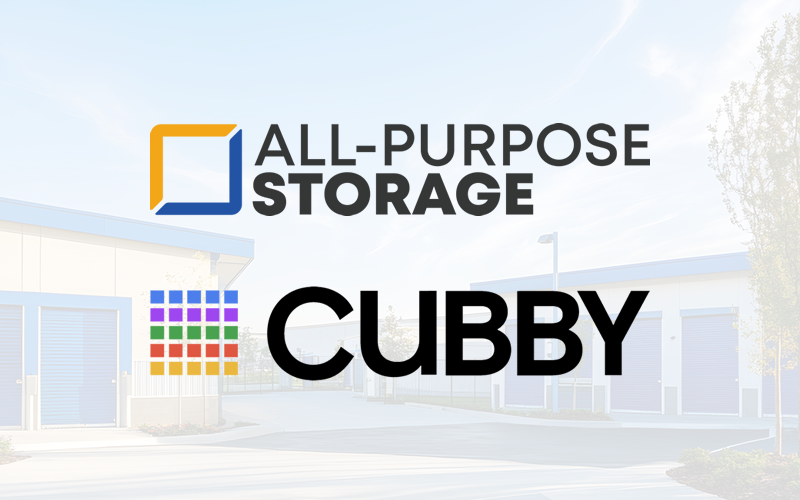Running Remote: How We Operate Self Storage Without Skipping a Beat

Yes — we manage all of our facilities remotely. And no — that doesn’t mean things fall through the cracks.
At All-Purpose Storage, we’ve built our entire third-party management platform around a remote-first operational model—and we believe it’s one of the smartest ways to run a storage business in today’s landscape.
Remote operations often raise eyebrows. Some owners assume it means limited oversight or a lack of personal attention. But when built the right way, remote operations actually unlock greater consistency, efficiency, and scalability than traditional on-site staffing models.
Here’s exactly how we make it work—and why it works so well.
1. Documented Playbooks & Operational SOPs
Every facility in our portfolio runs on a centralized operating system:
- From move-in procedures to auction prep
- From delinquency timelines to overlock cadence
- From customer communication templates to emergency protocols
Our team uses clearly documented SOPs that outline every process in detail. These aren't static documents—they're living systems that are updated as we scale and learn.
Why this matters:
- New team members can be trained quickly and confidently
- Owners can trust that expectations are being met regardless of the facility
- We eliminate the guesswork that often leads to poor tenant experiences
2. Thoughtful Camera & Tech Setup
Security cameras aren't just for safety—they're a daily operations tool.
We ensure each facility has high-quality coverage of key areas:
- Gate entry/exit
- Office and hallway views
- Loading areas
- Dumpster zones
- Access-controlled buildings or stairwells
These aren’t just "set and forget" systems. Our team checks footage to:
- Verify clean-up was completed
- Ensure lock checks were done properly
- Investigate tenant complaints
- Confirm vendor work completion
We also use motion alerts, smart locks, and cloud-based access systems for seamless oversight.
3. Scheduled Property Walks & Physical Oversight
Remote does not mean disconnected.
We schedule weekly or biweekly facility walks (frequency depends on size, occupancy, and property needs). These walks are performed by either a dedicated maintenance partner or a trained field support team member.
Each visit includes:
- A walkthrough of every vacant unit
- A lock check of occupied units
- Visual audit of signage, landscaping, lighting, and cleanliness
- Submission of a digital report to our operations team with photos and notes
This allows us to catch issues before tenants do—and follow up with vendors or staff when expectations aren’t met.
4. Local Vendor Relationships Built on Accountability
One of the biggest myths about remote operations is that you’re at the mercy of your vendors.
The truth? We vet and build long-term relationships with local partners. That includes:
- Snow removal crews
- Pest control companies
- HVAC and plumbing pros
- Electricians and general contractors
- Janitorial and cleaning teams
And just like we track team performance, we track vendor performance too. We keep response time records, pricing logs, and photo-verified completion reports.
Our expectations are clear, and our follow-up is immediate.
5. A Centralized Call Center Built for Storage
We don’t use generic answering services. We’ve built a dedicated call center experience that’s rooted in empathy, efficiency, and conversion.
Here’s what makes it work:
- Agents are trained on storage-specific customer scenarios
- Every facility has a site-specific cheat sheet with unique details (e.g., "this facility is next to the post office" or "building 300 is humidity-controlled")
- We use pop-up systems to deliver those cheat sheets live on the screen during the call
Why this matters:
- Renters feel like they’re talking to someone who knows their location
- Prospects get accurate, confident answers
- Owners get higher lead-to-lease conversion
Our call center doesn’t just answer calls—we drive revenue and enhance tenant satisfaction.
6. Maintenance Scheduling & Task Automation
We use centralized task management systems (like Monday.com) to assign, track, and verify every on-site task.
Each facility has its own board that includes:
- Daily, weekly, and monthly checklists
- Open maintenance tickets
- Vendor assignments and due dates
- Photo uploads and progress logs
This system keeps:
- Our field team accountable
- Our ops team informed
- And our owners confident that work is getting done—even if they never step foot on-site
7. Transparent, Real-Time Team Communication
We’re in constant contact with each other—and our clients.
Our internal team communicates through Slack and Microsoft Teams channels organized by function and facility. There’s no lag in decision making, no waiting on "so-and-so to get back from lunch."
We also provide clients with real-time visibility into:
- Onboarding milestones
- Financial performance
- Operational audits
- Custom reporting dashboards
Because remote operations only work when communication is strong and consistent.
8. Training, Cross-Training & Culture
Finally, remote success comes down to people.
We invest heavily in:
- Structured onboarding for every role
- Cross-training for flexibility during turnover or PTO
- Regular one-on-one coaching and growth plans
- A team culture that values transparency, hustle, and having fun doing it
Our team doesn’t just follow systems—they believe in the mission of running excellent facilities, wherever they are.
Remote, On Purpose
Our approach to self-storage operations isn’t accidental.
We’ve intentionally built a model that combines technology, human connection, and clear process to deliver results owners can rely on.
Whether you’re managing one facility or scaling to five, remote operations can work beautifully—with the right team behind you.


